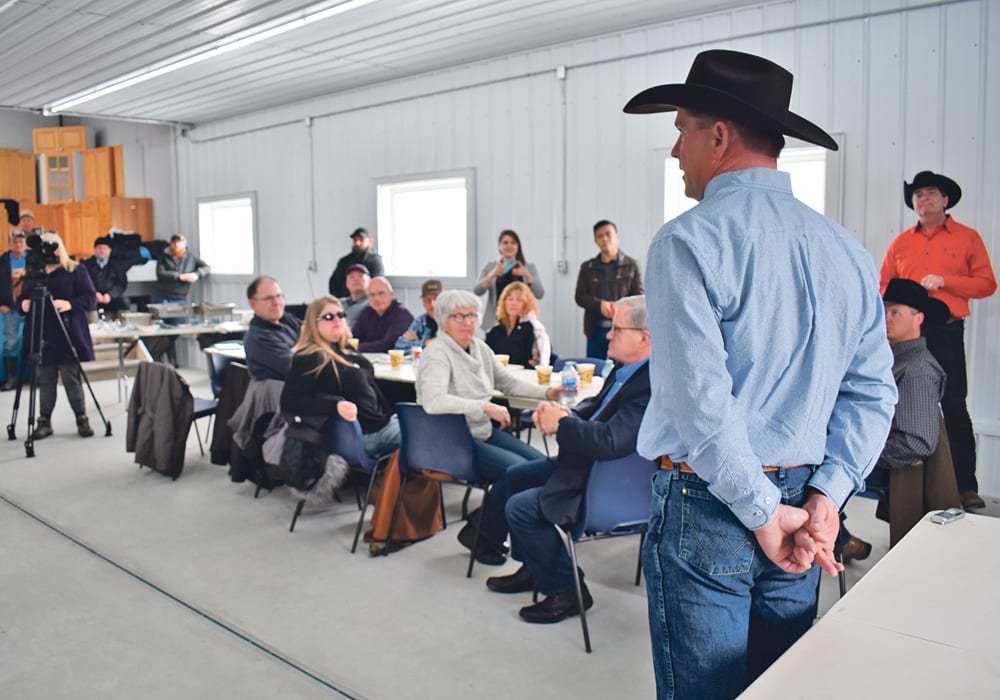‘Stamping out is still a valid option for some of our diseases,’ vet says while defending the widespread killing of animals
OTTAWA — About 11,500 cattle were killed in the Jenner region of southeastern Alberta in 2016-17 after one cow was initially found infected with bovine tuberculosis.
Five more infected animals were discovered in an ensuing investigation.
Does Canada still have the social licence to kill so many animals to find only six with the actual disease?
Dr. Eugene Janzen, veterinarian and professor at the University of Calgary school of veterinary medicine, posed that question Nov. 28 to a room full of veterinarians and livestock health professionals at the National Farmed Animal Health and Welfare Council Forum.
Read Also

VIDEO: Claas Axion 9.450 tractor wins ‘Tractor of the Year’ at Agritechnica 2025
On opening day of Agritechnica 2025, Claas’ Axion 9.450 Terra Trac tractor was awarded ‘Tractor of the Year’ for 2026 in the HighPower category.
The question is far from moot, since one cow in southern British Columbia was confirmed with bovine TB late last month and the resulting investigation by the Canadian Food Inspection Agency is sure to involve eradication of many cattle.
Dr. Jaspinder Komal, Canada’s chief veterinary officer, said that question has been asked within the CFIA and was also put to an international scientific panel.
“The answer from them was that ‘we are very envious of your program and the successes that you have achieved over the last hundred years. Don’t let it go because if you let it go now, as U.K. and other countries did, they’re struggling,’ ” said Komal.
He said international trade is key to the Canadian cattle business and disease management gives trading partners confidence in animal health and food safety.
“Our system works. I know it’s a lot of animals but I think in the long scheme of things, I think we are better off continuing to manage this program, which is not only animal health but also a public health issue. Because, if you let this go, we will start seeing cases of BTB (bovine tuberculosis) increasing, which will translate into public health issues in Canada.”
People can contract tuberculosis from infected cattle by drinking unpasteurized milk from those cattle, inhaling infectious aerosols or direct contact through breaks in the skin.
Dr. Rick James-Davies, senior director of western operations for the CFIA, was directly involved in the Alberta investigation.
He said he has asked colleagues about Canada’s system of animal eradication in response to bovine TB.
“What I hear at the association level is a lot of pride in where we’ve got to in Canada, a recognition that our system is different from the American system and there’s a reason for that,” he said.
“And (there is) a fair amount of ongoing support that there’s hard decisions to make but the net benefit to the industry and the sustainability of, really, producers across Canada … is there. So I think we continue to hear that stamping out is still a valid option for some of our diseases.”
Dr. Penny Greenwood, national manager with the CFIA, said bovine TB has a long incubation period and that has a bearing on any investigation because infected animals don’t always test positive.
“We have no idea of how many positive animals were in there,” she said of the herds that were destroyed during the Alberta investigation.
“TB is not a disease like foot and mouth. We found six cases that were far enough along to be detected and that our tests, which are all very poor for TB, could detect. It is not like foot and mouth where everything that has the disease will test positive.
“There could have been 50 animals in there incubating it and they would not test positive.… Six is not reflective of the risk that was prevented by killing all of those animals.”
Karin Schmid, the Alberta Beef Producers specialist who acted as liaison during the TB investigation, said some producers did question the need to destroy so many cattle.
“As more information became available … maybe we would have done it differently in hindsight, but at the time, with the information we had, it was the right move,” Schmid said.
















